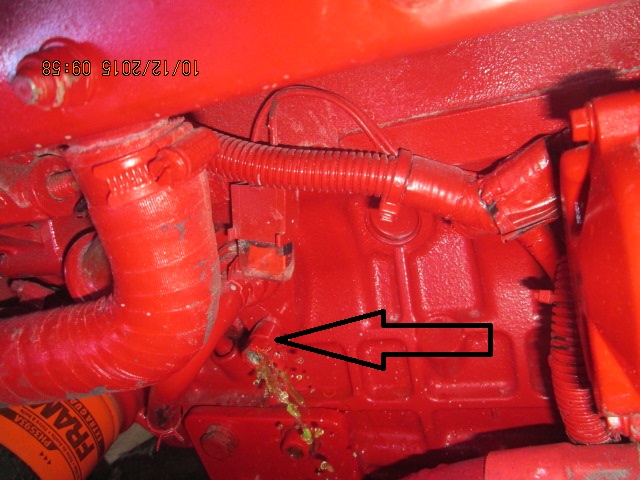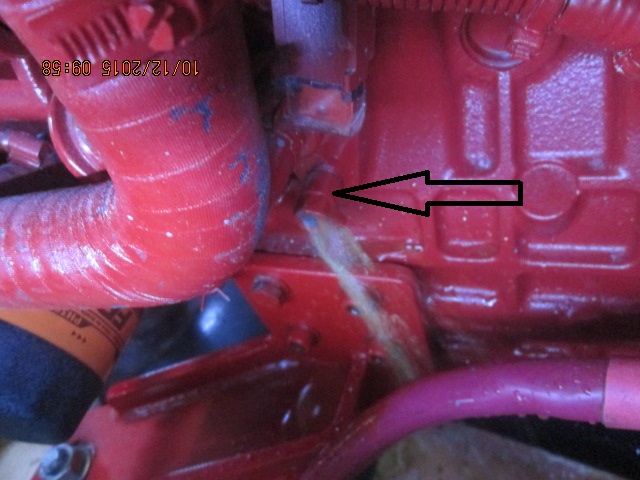Always the hard spots to get to aren't they 😕
Hurray, we got the petcock working to drain the water\antifreeze. We had worked the petcock screwing in\out with Simple Green on the threads and we could slowly see the petcock starting to free up. Then we unscrewed it most of the way out. We then ran the BarraMarina 38 hp for a bit to get the temperature up to 165 deg and the pressure up in the system hoping that the water\antifreeze would break out of the petcock. It did not come out at all. Then we unscrewed the petcock plug completely and with the engine off we poked a wire inside the petcock. Then the water\antifreeze came out. It was hot of course. Anyway we let it all drain out or what we thought was all of it. We removed the accumulator tanks radiator cap and let the air lock out. Then we opened the radiator cap on the motor after the motor cooled off some.
Water/antifreeze coming out.
Water/antifreeze coming out.
Lets not confuse the wet clothes with water. It is pure sweat. It is in the 90's in the cabin and then add a hot engine and 90% humidity and you really wonder why I am not completely wet, well a litter later I was 😊
Had to clean this up and put a tab of grease on the threads.
Damn! We will purchase a new 16v radiator cap for the engine
and of course clean up the fill area and the clogged
overflow hose. This will not happen again!
From the Btea Engine Forum:
"The water you see in the heat exchanger tank is residual to the system. I suspect it is water from the water heater system/ header tank. You can disconnect the large hose at the bottom of the heat exchanger tank between the tank and the engine fresh water pump or disconnect the small water heater hose from the bottom of the tank under the exhaust outlet.
This will completely drain the systems of all residual coolant water."
So guess what my next project is, disconnect a hose and drain the rest!
(Editor's note - we let the drainage go into the deep bilge with the main bilge pump turned off. We will shop-vac it out then transfer the waste into a separate container for the correct disposal process as to not contaminate the canal water.)






No comments:
Post a Comment